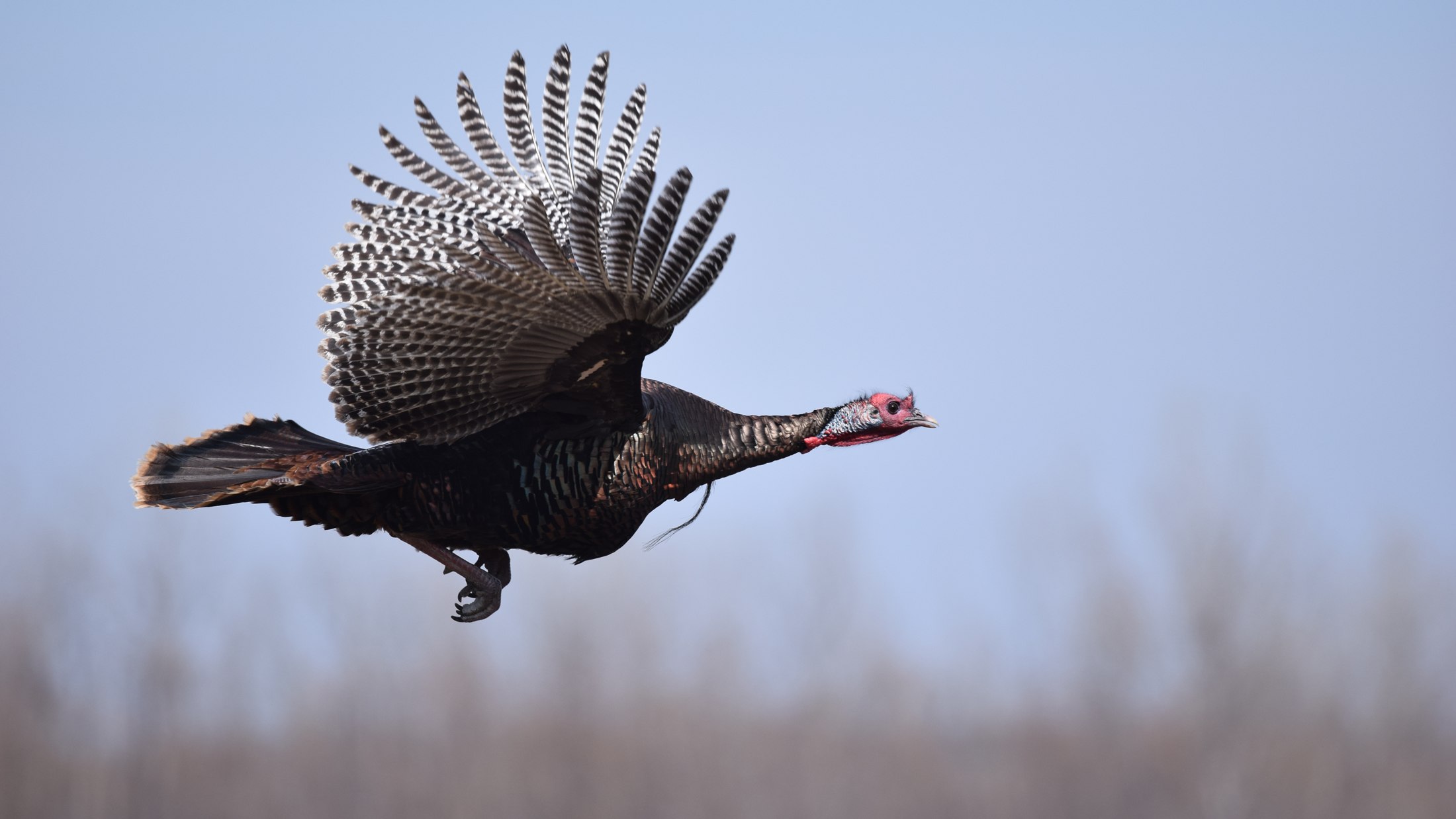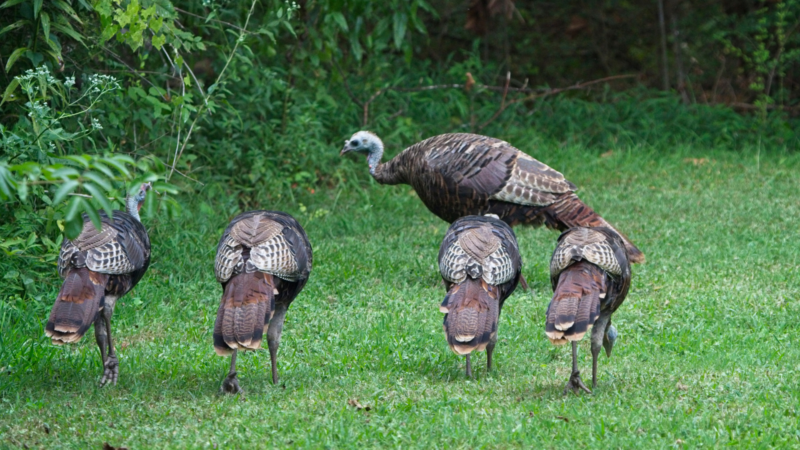It’s fun to see wild turkeys strutting through backyards and neighborhoods. But can wild turkeys fly? And if they can, how fast are they? Depending on what you’ve heard, the answers might surprise you.
Many people are surprised to learn that wild turkeys can actually fly. While domestic turkeys are often too heavy to get airborne, their wild cousins have some impressive flight capabilities. In this article, we’ll explore the truth about wild turkeys and their flying talents.
An Overview of Wild Turkey Flight
Wild turkeys are strong, agile fliers that take readily to the air. They can achieve speeds of up to 55 miles per hour in flight. With their broad, powerful wings, they are capable of explosive bursts of flight.
While they do not migrate and generally stick to short flights, wild turkeys are able to fly up to a quarter of a mile when needed. Their flight abilities help them evade predators, reach nighttime roosting spots, and cross rivers and canyons.
Wild Turkey Flight Speed and Distance
When taking off quickly to escape danger, wild turkeys can fly at speeds between 40 and 55 miles per hour. This rapid speed allows them to dart away from predators suddenly
These birds fly in spurts covering about 400 meters (a quarter of a mile) in a typical flight. Though brief this quick flight gives them the distance they need to find safety.
How High Do Wild Turkeys Fly?
Wild turkeys generally fly fairly low to the ground. They fly high enough to reach the branches of trees, their preferred roosting spots.
Most flights reach heights of around 20 to 30 feet to access branch perches. However, wild turkeys are capable of flying as high as 15 meters or about 50 feet when necessary.
Why Wild Turkeys Fly
For wild turkeys, the ability to fly is key to their survival. Here are some of the main reasons wild turkeys take to the air:
-
Evading predators – Flight allows turkeys to escape from predators on the ground such as foxes, coyotes, bobcats, and feral dogs.
-
Reaching roosts – Turkeys fly up to reach tree branches to roost safely at night off the ground.
-
Crossing rivers and canyons – Turkeys may fly longer distances to traverse large canyons and rivers.
-
Accessing food sources – Flight helps turkeys reach food resources like berry patches that are farther afield.
Comparison to Domestic Turkeys
Domestic broad-breasted turkeys, bred for meat production, look physically different from wild turkeys. Their larger breast muscles inhibit their ability to fly.
While domestic turkeys may be able to flutter a short way, they lack the aerodynamic profile and flight muscles of wild turkeys. As a result, domestic turkeys are largely earthbound.
Wild turkeys have streamlined bodies, long legs, and powerful wings specially equipped for frequent flight. Their lifestyle requires this aerial agility that domestic turkeys simply don’t possess.
Amazing Facts About Wild Turkey Flight
Here are some incredible facts about the flight capabilities of wild turkeys that may surprise you:
-
Wild turkeys can burst into flight at speeds up to 55 mph. That’s faster than a domestic turkey can run!
-
Their wingspan reaches up to 5 feet across.
-
They can launch themselves airborne from a standing start. No running start required!
-
Newly hatched turkeys can make short flights of a few feet by just 2 weeks old.
-
Turkeys sleep in trees at night, requiring flight to reach their roosts.
-
Male turkeys may fly down to display grounds each morning.
-
Despite their bulk, some wild turkeys weigh only around 16 pounds, light enough for flight.
Why Wild Turkeys Don’t Migrate
While they are strong fliers, you won’t see flocks of wild turkeys migrating like geese or other birds. A few reasons explain why wild turkeys stick close to home rather than migrating:
-
They are non-migratory birds with small home ranges of about 2 square miles.
-
Their breast muscles are designed for short bursts of flight, not sustained lengthy flight.
-
They have limited energy stores in the form of glycogen to power long flights.
-
Their relatively heavy body weight also limits prolonged flight.
-
They inhabit areas with year-round food sources, removing the need to migrate.
In Summary
Wild turkeys are impressive fliers, thanks to their muscular wings, slim profile, and light weight. They take readily to the air, flying at fast speeds of 40-55 mph in short bursts. Their flight abilities allow them to evade predators, reach night roosts, and access vital resources. While they don’t migrate, they are well equipped for the frequent short flights their lifestyle demands. So next time you see a turkey sailing overhead, know that it’s just a wild turkey doing what comes naturally!

Why do so many people think turkeys can’t fly?

“Turkeys spend so much time on the ground eating and socializing with other turkeys that people think of them as ground birds,” Erickson says. “And many people are more familiar with farm turkeys than with wild ones. Although they belong to the exact same species, farm turkeys have been bred for many, many generations to have heavy pectoral muscles—the muscles that power the wings.”
Erickson says those larger pectoral muscles make it too heavy for their wings to support. Every once in a while, some farm turkeys can fly, but most cannot.
So, can turkeys fly?
Yes, wild turkeys can fly short distances at surprisingly fast speeds up to 60 miles per hour. They will often fly up into trees to roost at night, keeping them safe from predators. But it’s rare to see turkeys fly. Plus, domesticated turkeys (those raised to live on farms) don’t always fly. So it’s easy to see why there is often a lot of debate around this topic. Check out some flying turkeys in this video, along with some additional wild turkey facts.
Now that you know wild turkeys can fly, you might be interested to know a little bit more of the science behind it. We spoke with bird expert Laura Erickson, who is a scientist, writer, and former middle school teacher. She’s loved birds since she was a little girl and has been writing and talking about them for many years. This includes everything from her For the Birds radio show to her most recent award-winning book 100 Plants To Feed the Birds.
To help us better understand turkeys and their flight, we asked her to break it down for us. You are sure to learn a thing or two about turkeys. Keep reading!
Large Flock of Turkeys Fly Across the Road and Over Traffic | Wild Bird Behavior
FAQ
How far can a wild turkey fly?
Why can’t wild turkeys fly?
How fast can a wild turkey run and fly?
Can wild turkeys fly in trees?
